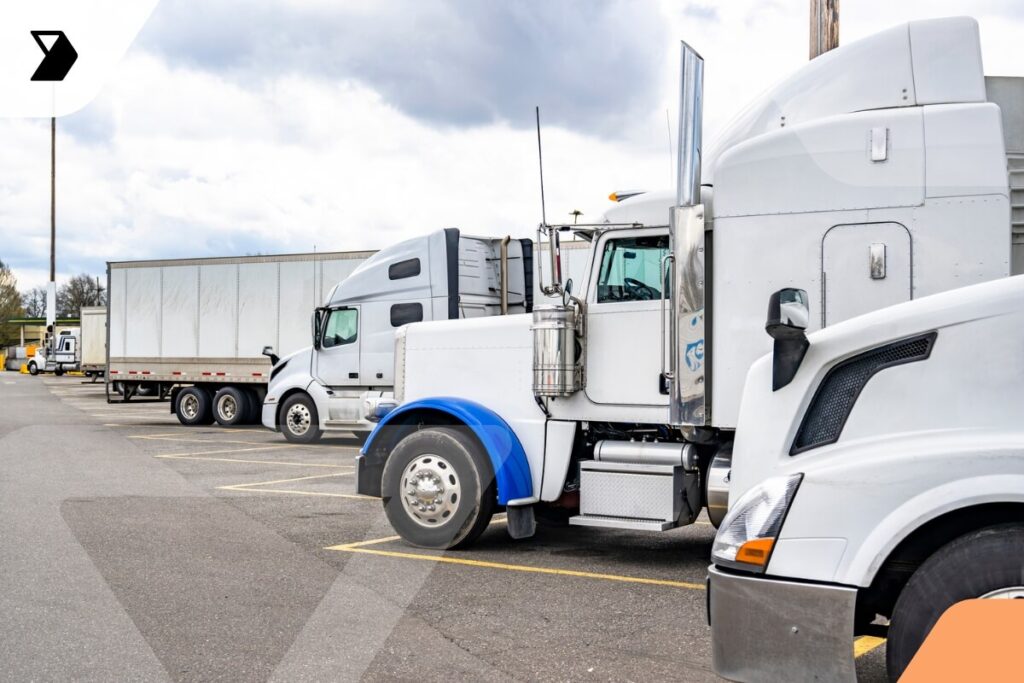Hazardous Materials Shipping Papers: Explanation and Examples
July 6, 2020 At this point in film history, hazmat suits have become iconic. You can picture a character walking across the silver screen in a hazmat suit right now. And it’s easy to envision the bunny suit, the surprisingly well-lit face shield, and the life-giving oxygen tube coming out the back. To quantify this, IMDb.com actually has a list of 239 movies and TV shows featuring hazmat suits. What’s the best hazmat suit show or movie of all time? The guess I would have phoned home is E.T.: The Extra-Terrestrial. Alas, it’s important to realize that sometimes the copy.
Ready to transform your supply chain?

At this point in film history, hazmat suits have become iconic. You can picture a character walking across the silver screen in a hazmat suit right now. And it’s easy to envision the bunny suit, the surprisingly well-lit face shield, and the life-giving oxygen tube coming out the back.
To quantify this, IMDb.com actually has a list of 239 movies and TV shows featuring hazmat suits. What’s the best hazmat suit show or movie of all time? The guess I would have phoned home is E.T.: The Extra-Terrestrial.
Alas, it’s important to realize that sometimes the copy is better than the original. Subsequently, the highest-rated movie or TV show featuring a hazmat suit according to IMDb.com is the 1980s-inspired Stranger Things. Specifically, it’s the episode titled Chapter Eight: The Upside Down.

In real life, the logistics industry takes hazmat very seriously—especially the paperwork. And rightly so. After all, hazmat shipping papers tell first responders whether they need a hazmat suit! Thus today, we’re going to dive in to everything involved with hazardous materials shipping papers.
Vast sections of the Federal Motor Carrier Safety Administration (FMCSA) rules and regulations are dedicated to hazmat and hazmat shipping papers. However, the emphasis on hazmat paperwork is simple: safety.
Failure to keep your hazmat paperwork straight can grind you to a halt. Hazmat-related violations can include Out of Service status and hefty fines that flip your bottom line upside down.
And remember what we learned from Stranger Things. You don’t want to wind up in the Upside Down! Instead, let’s find out all there is to know about hazardous materials shipping papers. C’mon, let’s go!
Classifications of Hazardous Materials
OK, let’s start with the hazmat basics.
First of all, hazardous materials are organized into classes according to the risk related to that material. These nine hazardous material classifications are consistent across all agencies that are involved with the regulation of commercial shipping. The classes are as follows:
- Explosives: Class 1
- Gases: Class 2
- Flammable liquids: Class 3
- Flammable solids: Class 4
- Oxidizers/organic peroxides: Class 5
- Toxic and infectious substances: Class 6
- Division 6.1: poisonous material
- Division 6.2: infectious substance
- Radioactive material: Class 7
- Corrosives: Class 8:
- Miscellaneous hazardous materials: Class 9
The Hazmat Paperwork Script
Also, the FMCSA governs most trucking-related rules and regulations. But when it comes to hazmat shipments (and hazmat paperwork guidelines specifically), the FMCSA defaults to the Code of Federal Regulations. You can find all the details about hazmat shipments here: (CFR): Title 49: Part 172: Subpart C. That’s the script.
The FMCSA website also provides a great document titled “How to Comply with Federal Hazardous Materials Regulations,” which provides guidelines for staying safe and legal.
In addition, the motor carrier new entrant safety audit includes a section specifically on hazmat. Specifically, hazardous materials shipping papers is a huge area of focus.
{{cta(‘512469de-2c9e-4a8d-922f-af193b232913’)}}
So, now you know where to find general information on transporting hazardous materials. What about the specific information you’ll need?
Information Required on Your Hazmat Paperwork
Obviously, the FMCSA and law enforcement officials are stringent about hazmat paperwork. Carriers that transport hazmat must have the appropriate documentation. And good paperwork begins with the shipper.
Shippers of hazardous materials must provide carriers with shipping papers. Shippers must also provide emergency response information for use in case of an accident. This paperwork is in addition to the standard bills of lading.
Hazmat shipping papers identify a greater level of detail about the freight being transported. This descriptive information guides the actions of a first responder in the event of an emergency. In other words, a first responder won’t know if they need their hazmat suit unless your paperwork tells them!
Everything on this list is chiefly a safety concern. Here’s the information required on all hazmat paperwork:
- Hazard class (1-9) and subclass where applicable
- The identification number according to the Hazardous Materials Table
- The shipping name of the hazardous material
- Packing group, identified in Roman numerals
- Total quantity of hazardous materials
- The number and type of packages holding the hazardous contents
- Any additional description requirements in accordance with 49 CFR Section 172.203
- An emergency response telephone number
Hazmat shipping papers must be kept within the driver’s reach (when the driver’s seat belt is on). Also, the hazmat paperwork must be visible to any first responder entering the vehicle.
What Must Emergency Information Include?
The FMCSA spells out the exact paperwork information that must be visible to first responders.
- Emergency response number: The FMCSA dictates this number must be monitored at all times while the shipment is in transit. In other words, if you’re the emergency contact, don’t forget your phone charger, OK?
- Emergency response information: This must be visible on the shipping papers.
- Description of the hazardous material
- Immediate health risks and dangers
- Immediate methods for combating fires, spills, or leaks of any size
- Preliminary first aid measures
How Long Must You Keep Hazardous Materials Shipping Papers?
First of all, here’s a link to a hazardous material shipping paper template. How long must you keep that record?
According to the FMCSA, hazardous materials paperwork must be kept for one to three years depending on your role in the shipment. Here are the guidelines for retaining paperwork:
- A carrier must keep shipping papers for one year after the material is accepted.
- A shipper must keep shipping papers for two years after the initial carrier accepts the material.
- For hazardous waste, the shipper and the carrier must keep shipping papers for three years after the initial carrier accepts the material.
Let’s dig a little deeper into why and how long you should hang onto this important documentation.
Best Practices for Retaining Hazardous Material Shipping Paperwork
Carriers must retain a copy of all shipping paperwork. Instead of paper documents, the FMCSA allows electronic images. In reality, paperwork drives the logistics industry. It seems like there’s a small mountain of paperwork associated with every load. And as noted above, hazmat requires an additional layer of documentation.
Over the course of a few years, the paperwork can bury you. In essence, all the clutter, storage bins, and filing cabinets can make you feel claustrophobic!
The logistics industry knows there’s a better way. Savvy carriers are leaving the paperwork back in the 1980s. Instead, they’re recruiting technology companies like Vector to help them streamline all workflows regarding paperwork.
Hazmat is still a tightly regulated subset of paperwork. But carriers and drivers need to keep looking for an edge. Vector’s software is the shortest route to increased productivity and streamlined workflow. In reality, a move toward document scanning and digitization is the “low-hanging fruit” of productivity (for example, one-click invoicing).
Escape from Paperwork Mountain. Get a scanning software to help organize not just your hazardous material shipping papers—but all your documents.
Avoid Hazmat Suits! Use the Hazardous Materials Information Hotline
If you have any questions about the Hazardous Materials Regulations, call the FMCSA’s hazmat hotline. As iconic as those slow-walking, hazmat-clad characters are, I think you’d agree that we want to leave that scene on the cutting-room floor in real life.
- 1-800-HMR-4922
- Hours: Monday through Friday, 9 a.m.–5 p.m. Eastern time
- [email protected]
So, when should you use this information? Keep on reading.
FAQs for the Hazmat Hotline
According to the FMCSA, these are typical reasons to call the hazmat info center:
- For information about the rules and regulations of hazmat transportation
- For help interpreting the Hazardous Materials Regulations (49 CFR Parts 100–185)
- In case you need to report a violation of the HMR
- To request DOT special permits for hazmat shipments
- So you can order copies of hazmat-related training material
- To request a formal letter of interpretation from the FMCSA in detail
Avoid the Upside Down
In conclusion, the FMCSA is vigilant about hazmat safety. Carriers and drivers are dedicated to avoiding the Upside Down of hazmat violations. But accidents happen. And when they do, having an organized procedure and game plan can be the difference between life and death. Thus, we all must do our part to avoid seeing the hazmat suit in real life.
Perhaps that’s another reason to start scanning and removing the clutter from our daily workflows. It can help us clear our heads, so we can stay sharp in times of crisis. Also, remember the other thing we learned from Stranger Things: that sometimes the copy is rated higher than the original!
{{cta(‘5797ca1a-c2c9-4016-aa36-9c9e2ef0e533′,’justifycenter’)}}
This post was written by Brian Deines. Brian believes that every day is a referendum on a brand’s relevance, and he’s excited to bring that kind of thinking to the world of modern manufacturing and logistics. He deploys a full-stack of business development, sales, and marketing tools built through years of work in the logistics, packaging, and tier-1 part supply industries serving a customer base comprised of Fortune 1000 OEMs.
Continue reading
Ready to transform your supply chain?
Increase efficiency and productivity. Say goodbye to delays, handwriting errors, and time-intensive manual data entry.



